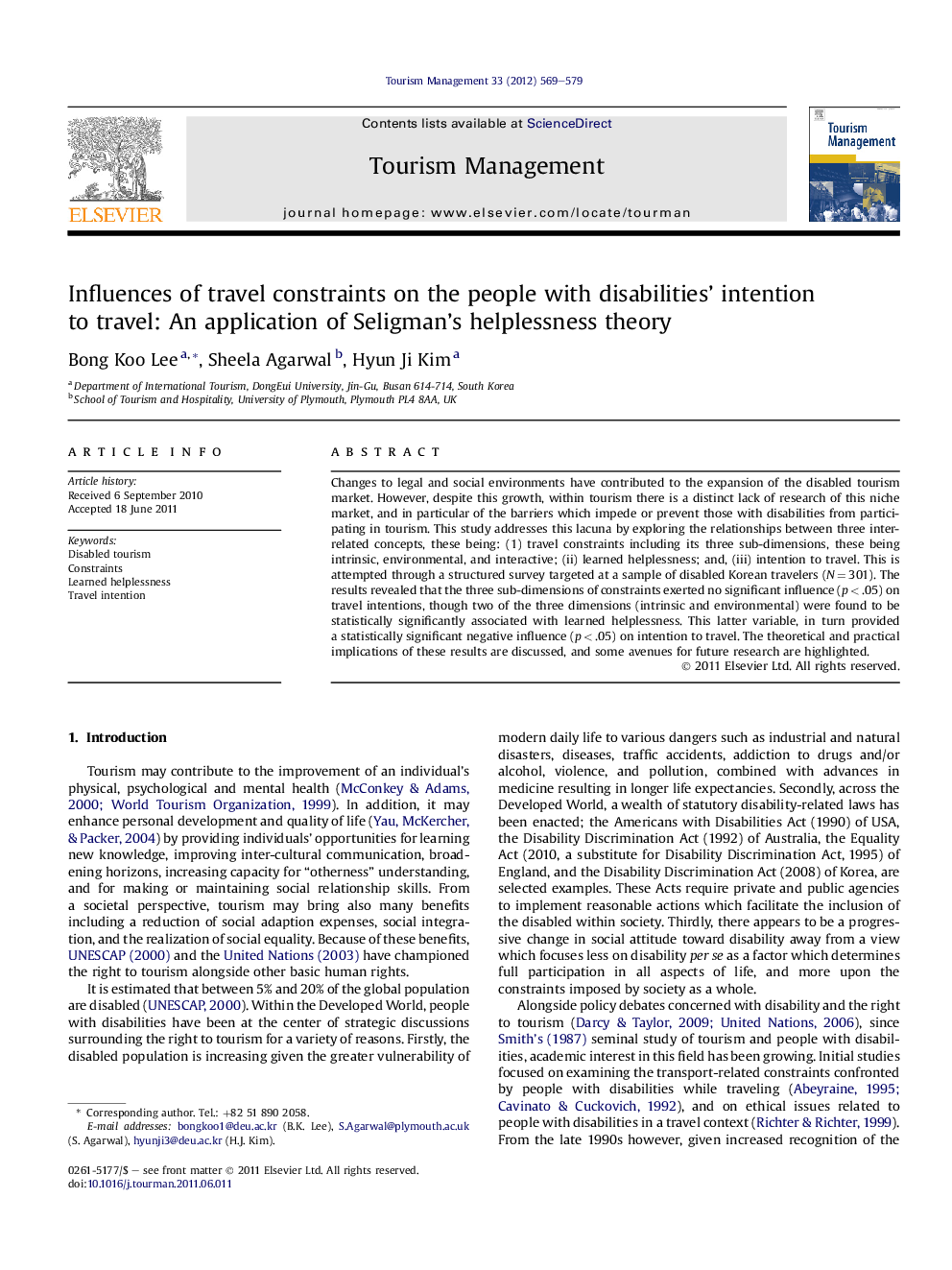| Article ID | Journal | Published Year | Pages | File Type |
|---|---|---|---|---|
| 1012473 | Tourism Management | 2012 | 11 Pages |
Changes to legal and social environments have contributed to the expansion of the disabled tourism market. However, despite this growth, within tourism there is a distinct lack of research of this niche market, and in particular of the barriers which impede or prevent those with disabilities from participating in tourism. This study addresses this lacuna by exploring the relationships between three inter-related concepts, these being: (1) travel constraints including its three sub-dimensions, these being intrinsic, environmental, and interactive; (ii) learned helplessness; and, (iii) intention to travel. This is attempted through a structured survey targeted at a sample of disabled Korean travelers (N = 301). The results revealed that the three sub-dimensions of constraints exerted no significant influence (p < .05) on travel intentions, though two of the three dimensions (intrinsic and environmental) were found to be statistically significantly associated with learned helplessness. This latter variable, in turn provided a statistically significant negative influence (p < .05) on intention to travel. The theoretical and practical implications of these results are discussed, and some avenues for future research are highlighted.
► Learned helplessness mediated between travel constraints and intention to travel. ► Learned helplessness significantly influenced travel constraints and travel intention. ► Perceived helplessness were influenced by intrinsic and environmental constraints. ► Greater understanding of the concept is required across different disability types. ► Re-visiting disability legislation and empowering the disabled must be considered.
